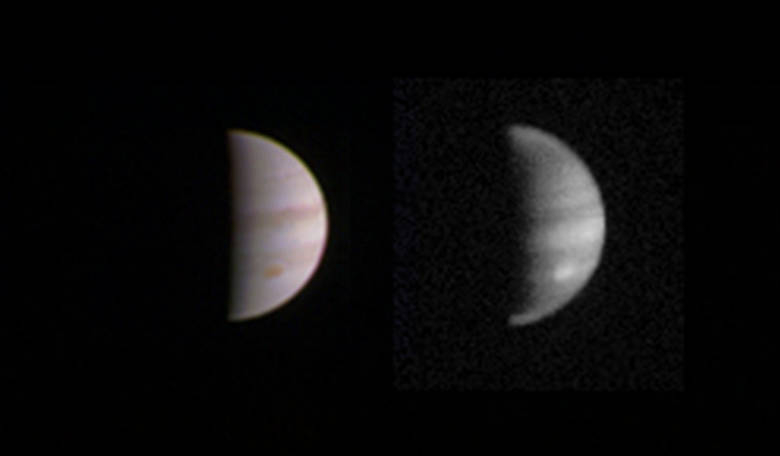On Saturday 27th August, NASA’s Juno spacecraft will skim Jupiters cloud tops as it makes its first closest approach during its prime mission to study the biggest planet in our Solar System. Juno is scheduled to approach the swirling clouds around 8.51 a.m EDT (12.51 UTC) with its full suite of instruments activated for the first time, ready to study the gas giant as the spacecraft hurtles by at 208, 000 kilometres per hour (130, 000 miles per hour) with respect to the planet.
When the spacecraft entered Jupiters orbit on 4th July, all of its instruments were turned off to ensure the critical burn manoeuvre was implemented successfully. “Since then, we have checked Juno from stem to stern and back again,” said Scott Bolton, principal investigator of Juno from the Southwest Research Institute in San Antonio. “We still have more testing to do, but we are confident that everything is working great, so for this upcoming flyby Juno's eyes and ears, our science instruments, will all be open."
Thirty five more close flybys of Jupiter are scheduled during its eighteen month mission, however this is the first opportunity to take a really good look at the stunning giant of the skies. Although the science data from the pass should arrive at Earth within days, it is expected that analysis of the information will take some time to be made available.
"No other spacecraft has ever orbited Jupiter this closely, or over the poles in this fashion," said Steve Levin, Juno project scientist from NASA's Jet Propulsion Laboratory in Pasadena, California. "This is our first opportunity and there are bound to be surprises. We need to take our time to make sure our conclusions are correct."
Juno’s visible light imager JunoCam is also expected to be snap-happy during the approach and a selection of images, including the first glimpse of Jupiter's north and south poles and the highest resolution imagery of the Jovian atmosphere are expected to be released later next week.











